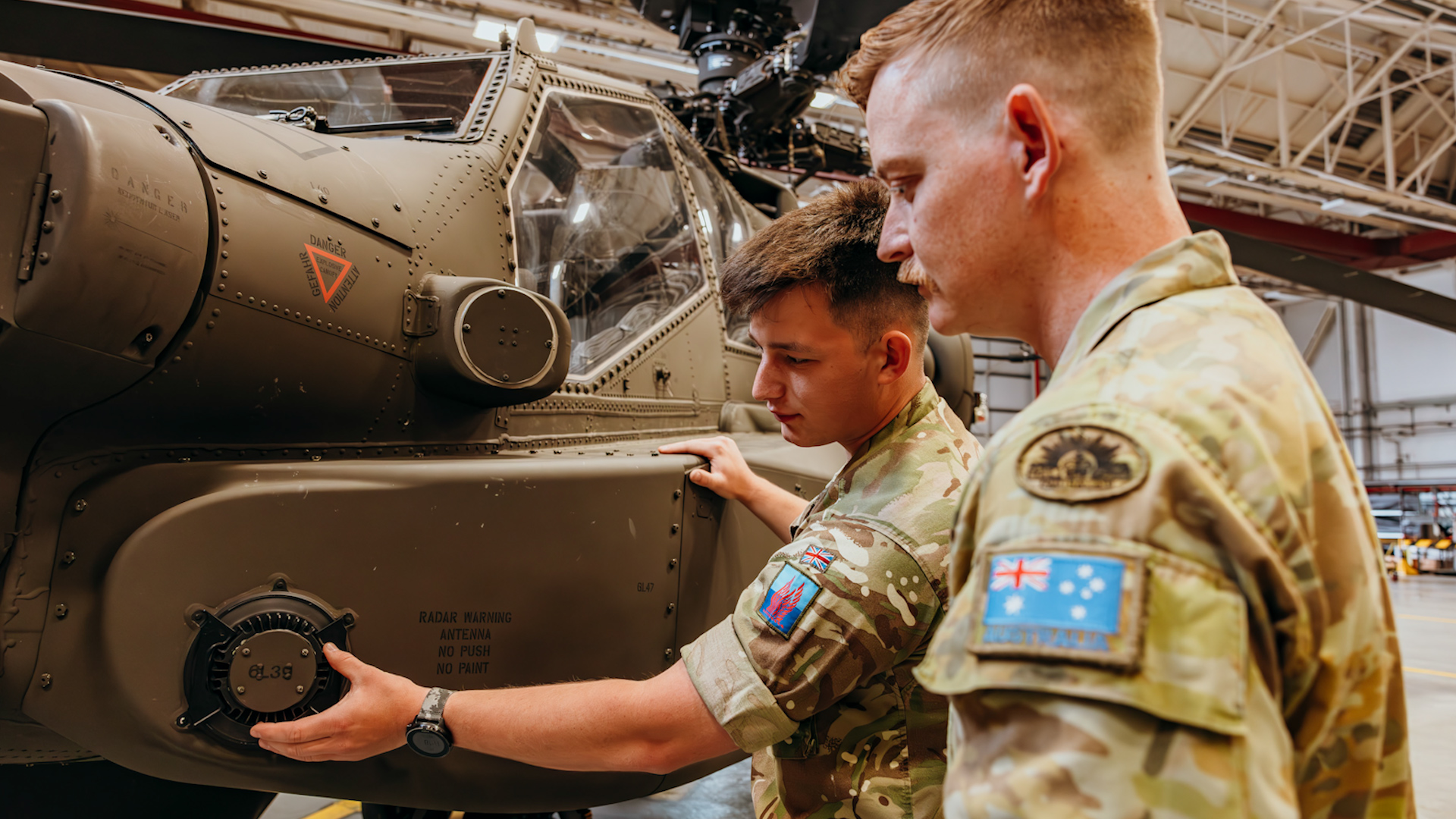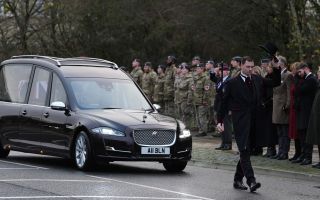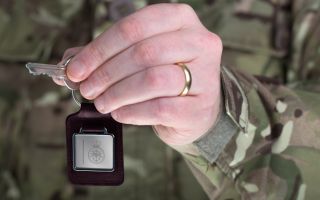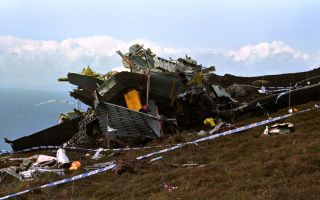Australian and British Army join forces to get hands-on with UK's AH-64E Apache fleet
The Australian Army has gathered real-world experience with the new Apache helicopter to take back to Australia – thanks to the British Army.
Engineers, aircraft and avionics technicians from Australia were part of the exchange experience getting hands-on with the future attack helicopter and learning the ropes on the UK's AH-64E Apache fleet.
Eight soldiers from the Australian Army Aviation Command were at Wattisham Flying Station, in Suffolk, were learning about the latest version of the attack helicopter before it enters service in Australia next year.
The Australian personnel were working with the 3 Regiment Army Air Corps (3 Regt AAC) – which introduced the AH-64E into service in 2022.
This latest experience exchange is part of growing links between the British and Australian militaries following the Aukus defence and security agreement in September 2021, which also includes the USA.
In January 2021, the Australian Department of Defence chose the AH-64E Apache to replace the Eurocopter Tiger armed reconnaissance helicopters (ARHs).
They are set to receive 29 AH-64E Apaches, including five for training, with the first deliveries scheduled for late next year.

In April, nine new Apache AH-64E attack helicopters joined Nato's largest exercise since the Cold War making their first appearance on a Nato exercise in Finland and Estonia for Exercise Arrow and Exercise Swift Response respectively.
Apache AH-64E
The British Army has referred to the Apache attack helicopter as "probably the most sophisticated piece of equipment in the world available to frontline troops".
It is designed to find and destroy air defence units, tanks and armoured vehicles, and is capable of a wide range of battlefield tasks.
The AH-64E Apache Guardian is equipped with additional sensors and communications to increase its reconnaissance capabilities. It can also control unmanned aerial vehicles.
The new Apache's Senior Operator, Lieutenant Colonel Charlie Hillman, told BFBS Forces News: "It looks to the layman almost exactly the same. From range, you can't really tell the difference.
"What it's brought though is increases in survivability, which is a primary reason you get to stay on the battlefield for longer.
"Its lethality has increased with some really exciting new weapon systems being fitted to it and, of course, its speed and range are also increased."









